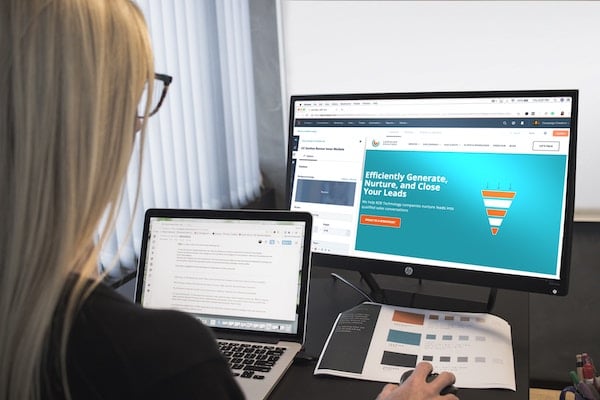Published on
Why Faculty Buy-In Is Core To The Success Of Online Programs

We all know that online learning is here to stay. Learners around the globe are drawn to the flexibility, ease of use, and access that online learning provides. As traditional institutions make the leap and begin launching programs to build their portfolios, one component of online learning that is core to success, and a differentiator for traditional institutions, is the ability to leverage the subject matter experts, researchers, and innovators who sit at the heart of the higher education community: the faculty.
But how do you engage them effectively, and get them to try new things? What is the secret to getting faculty buy-in for online learning?
The Cause
People become faculty because they have a passion for learning, discovery and sharing knowledge. Online learning provides additional outlets and avenues to expand the reach of that information. Digital platforms allow ideas to be spread beyond the borders of the brick and mortar institutions and around the globe. Access to learning, and the ability to reach new, untapped minds in almost every case, appeals to the driving mission of faculty.
Reminding faculty of the why—and enabling them to see a future where their ideas can be shared far and wide—is the first step in securing interest in online learning.
The Quality
Much of the hesitation from faculty around online learning tends to come from the perception of what online learning is—the associations with “correspondence schools” and for-profit entities with less than reputable goals.
While some bad players existed in the market in the past, the online learning environments of today with regional accreditation hold the same standards and meet the same criteria as regional traditional institutions. Online learning has been reviewed, critiqued, improved and guided by peer reviewers and administration by regional accrediting bodies. The diligence and dedication of these reviewers not only ensure that online learning meets necessary criteria, but in many cases, exceeds qualifications.
What’s more, at some universities (like mine) the faculty member who teaches the course on the ground is the same faculty member who teaches the course online.
The Learning
“It can’t be adequately taught online,” is probably one of the most overused phrases of higher education in my world. The truth is, yes, it probably can—and should be.
Online learning opens the door for pedagogies that are different than the standard. It challenges the faculty and the learner to look at coursework differently, but also allows for the use of technology and digital communication to enable success for students. From VR usage in science labs and adaptive learning for math, to the use of peer groups to enable composition skill-building where digital communities provide connections and opportunities to ensure concepts and materials are fully comprehended; these are all real-world examples of how we are bringing coursework to life in new and different ways, ultimately for the benefit of the learner. In fact, digital technologies require the faculty and the online support teams consider course structures, outcomes, and deliverables in a much more robust way than ground courses since the goal of online learning is typically at scale. And just think, faculty can then use the digital assets in their classrooms and allow for more hands-on activities to support learning for those students who choose a campus setting. It’s a win-win situation for ground and online learning.
Consider how wonderful the world of learning will be if the strongest thinkers and the world’s most brilliant researchers can build content to connect directly with larger audiences where learning from the finest—no matter where they sit—is now a reality.
The Academic Freedom
To be fair, this is a powerful concept and motivator but arguably the hardest one to grapple with in execution. The goal is to find the balance between academic freedom and scale—creating a space for creativity while maintaining course development is a careful balance. Not every course can be built in a world that is made for scale. It’s crucial for university leaders to be open, honest, and transparent about how content will be supported online and work closely with faculty to determine which model is right for them. Further, they must provide the guidance, support and instructional design to enable faculty members to make seamless modifications and enable as much flexibility as possible.
In Service of the Student
I’ve seen it firsthand: when the university leaders working to implement new digital teaching and learning technologies tap into these motivators—the “why” that drives people to become faculty in the first place—they’re able to gain faculty buy-in and be true, mutually respected partners.
More importantly, the university is able to deliver meaningful, sustainable solutions for the benefit the learner; whomever they are, wherever they are.
Author Perspective: Administrator

